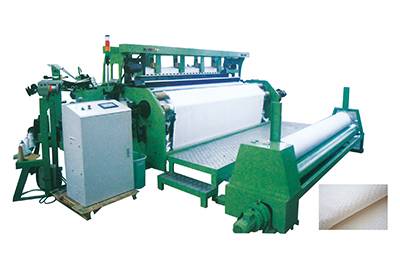Apr. 07, 2020
Textile machinery is a general term for all kinds of mechanical equipment required to process natural fibers or chemical fibers into textiles. The processes required to process different fibers such as cotton, tuberculosis, silk, and wool into textiles are not the same, and some are completely different, so the required machines are also varied. For example, Industrial Fabric Loom used in the industry. According to some information in the industry, Industrial Loom Suppliers found that textile machinery is classified into spinning equipment, weaving equipment, printing and dyeing equipment, finishing equipment, chemical fiber spinning equipment, reeling equipment and non-woven fabric equipment. Spinning equipment is divided into two types of processing short fiber and processing long fiber. Cotton and cotton chemical fibers are short fibers, and wool, linen, silk, and their blended chemical fibers are long fibers. The processing procedures of the two types of fibers are different, and the equipment cannot be used universally, but the design principles of some machines are similar. Even with the same type of equipment, the structure of the machine is similar, but due to the nature of the raw materials and the final requirements for the fabric, it is generally not universal.
Spinning equipment is mainly divided into two types of processing short fiber and processing long fiber, because of the variety. Machine structure, use and performance is different. According to the order in the process flow, it is divided into the opening and cleaning cotton machinery, carding machine, combing machine, coiling machine, winder, draw frame, draw frame, coarse, warping process yarn machine, spinning machine, Rotor spinning machine, wool and linen spinning machinery, etc.
The weaving equipment is divided into a winding process, a warping process, a drawing-in process, a weaving process, and a finishing process according to its process.

Fabric Loom
Printing and dyeing equipment singeing machine (cloth singeing), de boiling and bleaching machine (cloth sizing is removed), mercerizing machine (making the fabric fibers arranged neatly, and the fabric is shiny, the dye adsorption is better), uniform rolling Car (dyeing of fabric), setting machine (setting of fabric), pre-shrinking machine (controlling shrinkage of fabric).
Finishing equipment is the equipment used for textile finishing, mainly coating, calendering, printing, water washing, nitrate washing, sand-washing, embossing, punching, shaping, embroidery, bronzing, etc.
The advent of human-made fibers at the end of the 19th century broadened the field of textile machinery and added a category of chemical fiber machinery. The increase in people's demand for synthetic fibers has promoted large-scale synthetic fiber spinning equipment (the diameter of the spinning screw reaches 200 mm, and the daily output of a single spinning machine reaches 100 tons) and high speed (the spinning speed reaches 3000-4000 meters) / Points) development direction. The fastest-growing country in the world's synthetic fiber industry has equipment renewed almost every 5 to 6 years, and the number of machines has doubled in 10 years. In the past 20 years, the spinning and weaving equipment has made a lot of local improvements to adapt to the pure spinning of chemical fibers or blending with natural fibers, such as expanding the range of suitable spinning fibers for the drafting mechanism and eliminating static on the fibers. In the field of dyeing and finishing, high temperature and high-pressure dyeing equipment, heat setting equipment, resin finishing equipment, and loose finishing the equipment has been developed.
Non-woven fabrics are textiles made from textile fibers by bonding, fusing, or other chemical or mechanical methods. This kind of textile does not go through the traditional spinning, weaving or knitting process, also known as non-woven fabric and non-woven fabric. China Conveyor Belt Loom is currently popular at home and abroad.
Previous Advantages of Rapier Loom